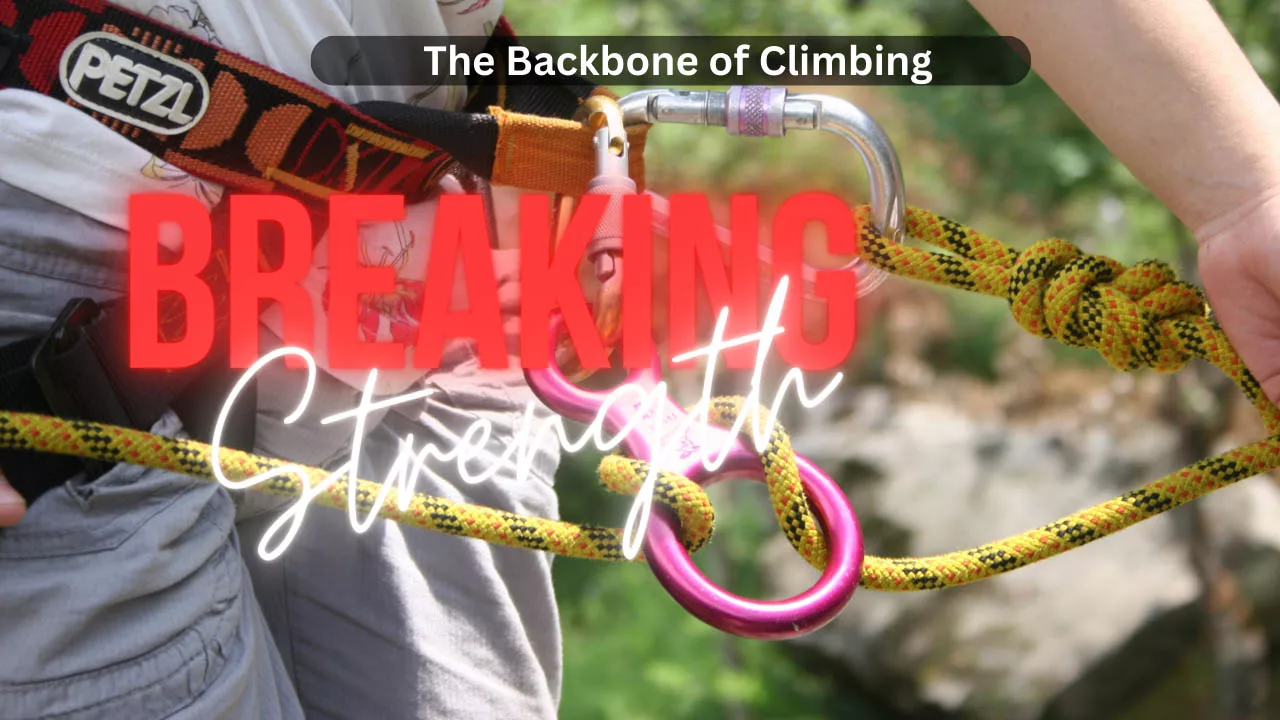The Science of Fall Factor: Guide for Climbers
Knowledge Base
Understanding Fall Factor A Guide for Beginner Mountaineers
Introduction:
Climbers must comprehend and handle risks, including fall factors. The fall factor is a critical element in climbing, impacting the force of impact on the climbing system during a fall. This article will explore the concept of the fall factor, and its significance, and offer practical advice for managing fall forces efficiently.
What is the Fall Factor?
The fall factor, often abbreviated as “FF,” is a numerical value used to assess the severity of a fall in climbing. It is calculated by dividing the length of a fall (distance fallen) by the amount of rope in the system available to absorb the fall. The fall factor is always a value between 0 and 2, representing different scenarios of falls.
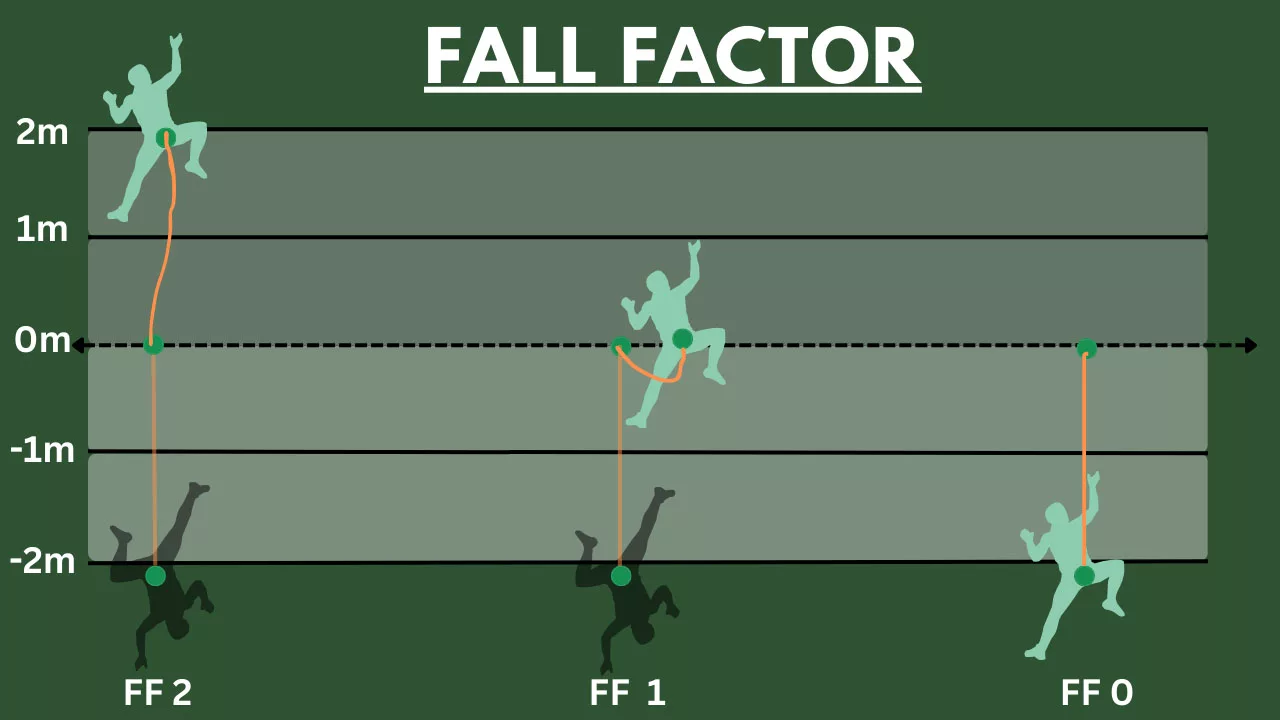
Mathematically, the Fall Factor (FF) is expressed as:
FF = Fall Length (FL) / Rope Length (RL)
An FF of 0 indicates a fall where the climber didn’t move from their starting position, while an FF of 2 indicates a climber fell the entire length of the rope (twice the rope length) before being caught by the belayer.
Illustrating Fall Factor:
Let’s take a closer look at different scenarios of FF with the help of illustrations:
1. Fall Factor 0 (FF = 0):
In this case, the climber falls but doesn’t move from their original position. This occurs when the climber is either at or above their last piece of protection when the fall happens. The rope is directly attached to the climber’s harness, and the system has no slack.
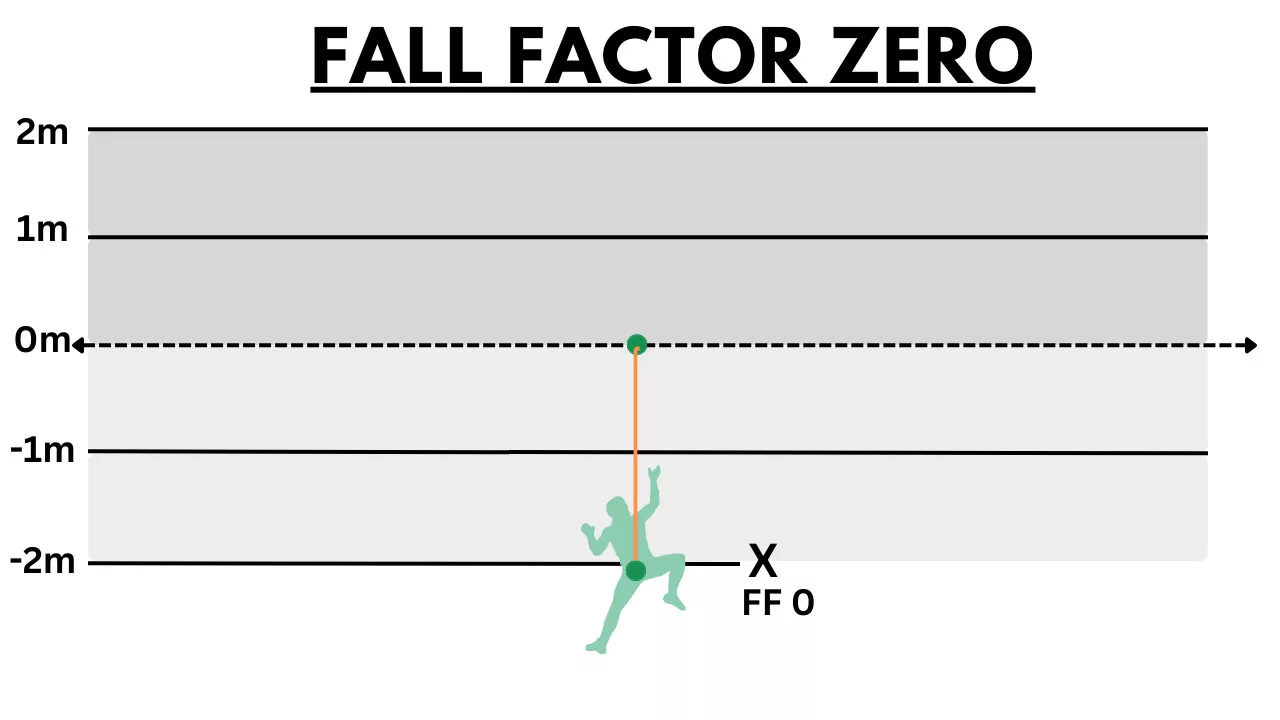
(Imagine a horizontal line indicating the climber’s position, with the rope directly attached to the harness)
2. Fall Factor 1 (FF = 1):
A fall with an FF of 1 happens when the climber falls the same distance as the rope length. This is often the most severe scenario as it generates the highest impact force on the climbing system. In a typical scenario, the climber is just above the last piece of protection, with little to no slack in the system.
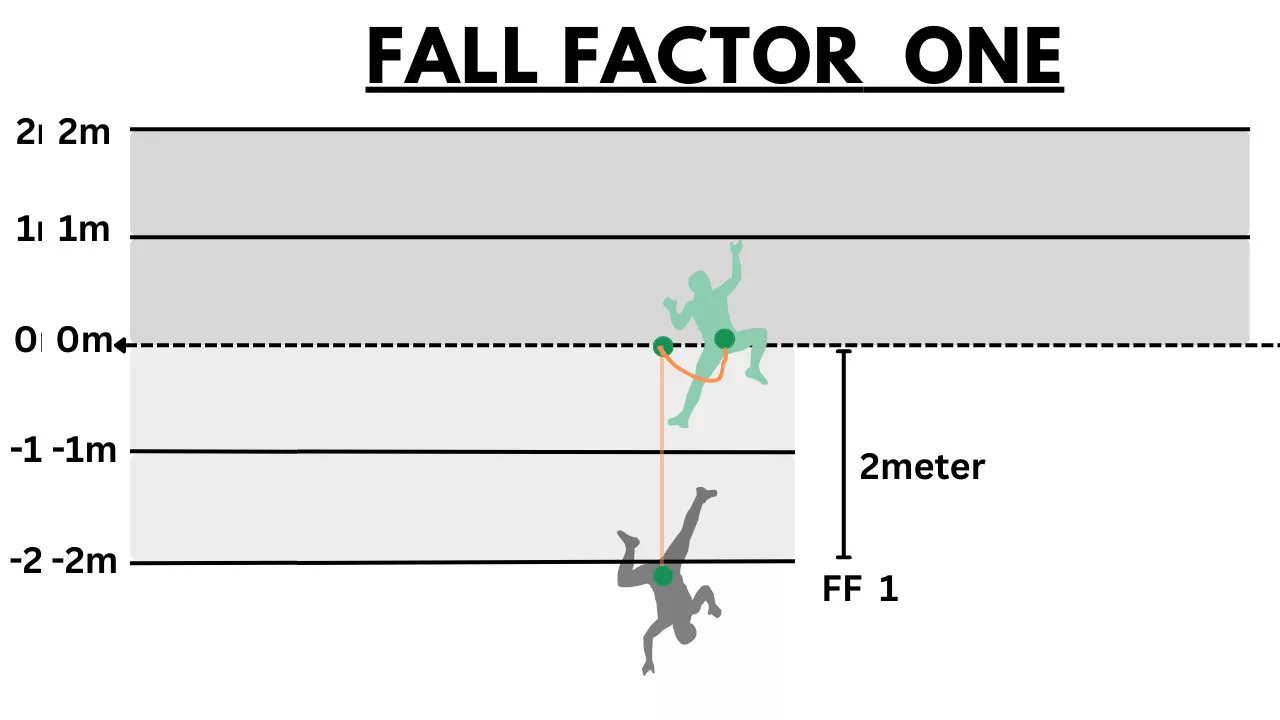
(Imagine a diagonal line indicating the climber’s fall trajectory, with the rope length matching the fall distance)
3. Fall Factor 2 (FF = 2):
A FF of 2 occurs when the climber falls twice the length of the rope. This situation can happen when the climber is significantly above the last piece of protection, and a considerable amount of slack exists in the system. FF 2 generates even higher impact forces than FF = 1 and should be avoided whenever possible.
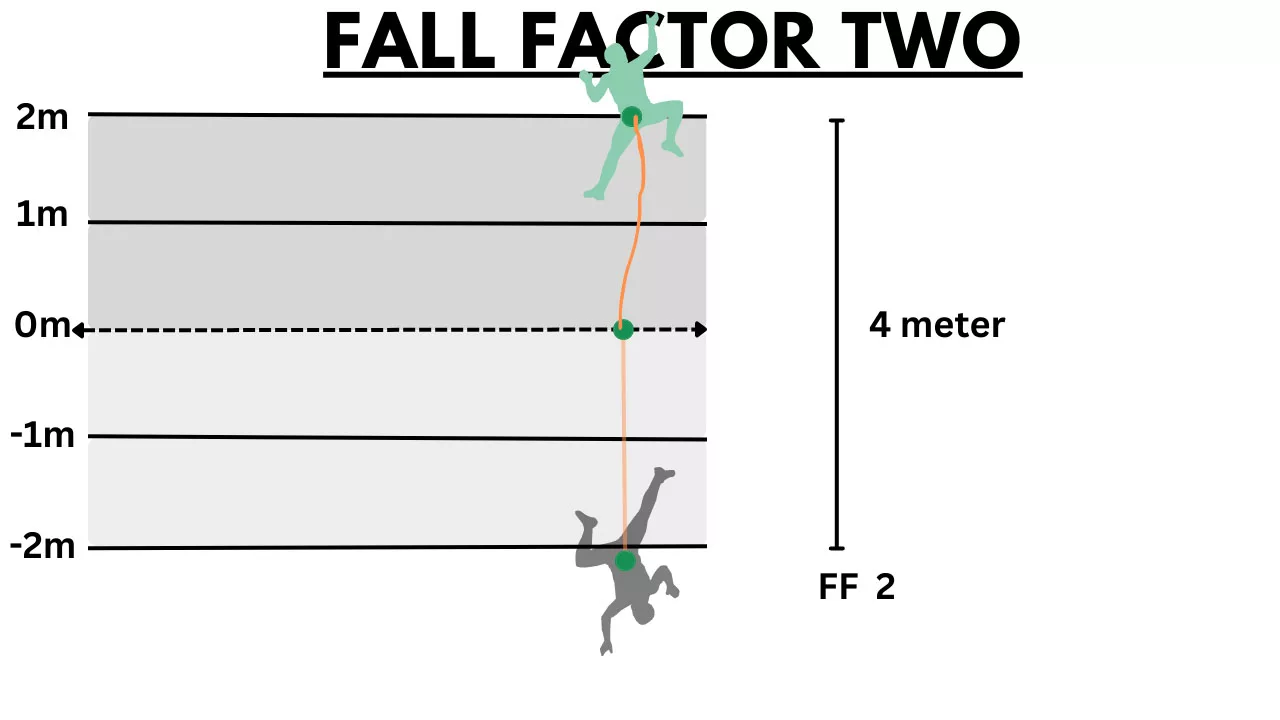
(Imagine a diagonal line indicating the climber’s fall trajectory, twice the length of the rope)
Lead Climbing FF
When lead climbing, the same logic applies. The climber in the artwork has ascended 30m above the main belay and has set up running belays for safety. Climber sets the last piece of equipment 15m above the main belay and then climbs another 15m before falling off the route.
The climber falls 30 meters before the rope and apparatus can begin to halt the fall. Because of the route’s overhanging part, there is 40m of rope between the climber and the belay device, resulting in a fall factor of 0.75.
FF = 30/ 40
FF = 0.75
The climber first dropped 30m; moreover, the rope extends to absorb the force, and there could be slip through the belay device. Since the fall factor is fairly modest, the climber’s actual fall distance is relatively large.
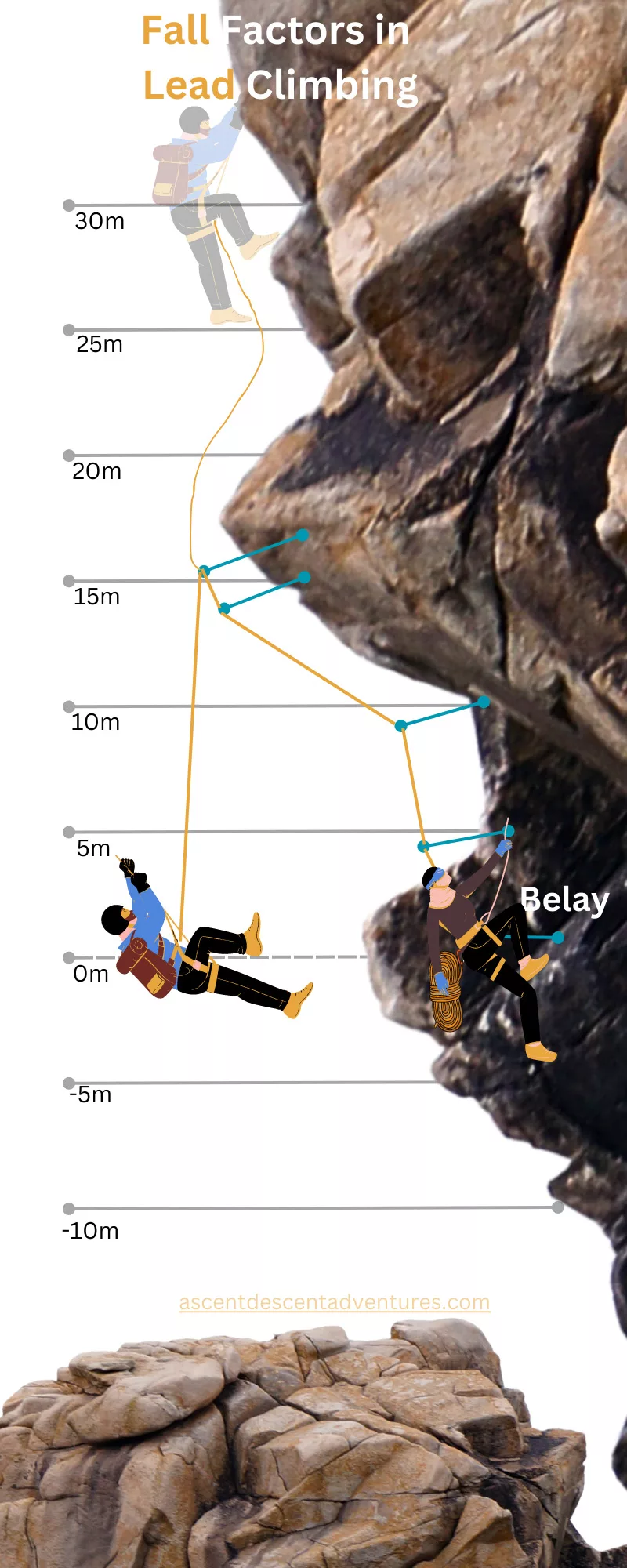
Managing Fall Factor:
To mitigate the impact force of a fall, climbers can take the following precautions:
1. Place Adequate Protection:
Ensure that you place enough reliable protection along the route to reduce potential fall distances.
2. Limit Slack:
Climbers and belayers should work together to minimize slack in the system to keep the FF as low as possible.
3. Be Cautious on Overhangs:
Be extra careful on overhanging sections where falling could lead to a higher FF.
4. Use Dynamic Ropes:
Dynamic ropes are designed to absorb energy during a fall, reducing the impact on the climber and the protection.
Learn: Risk Management
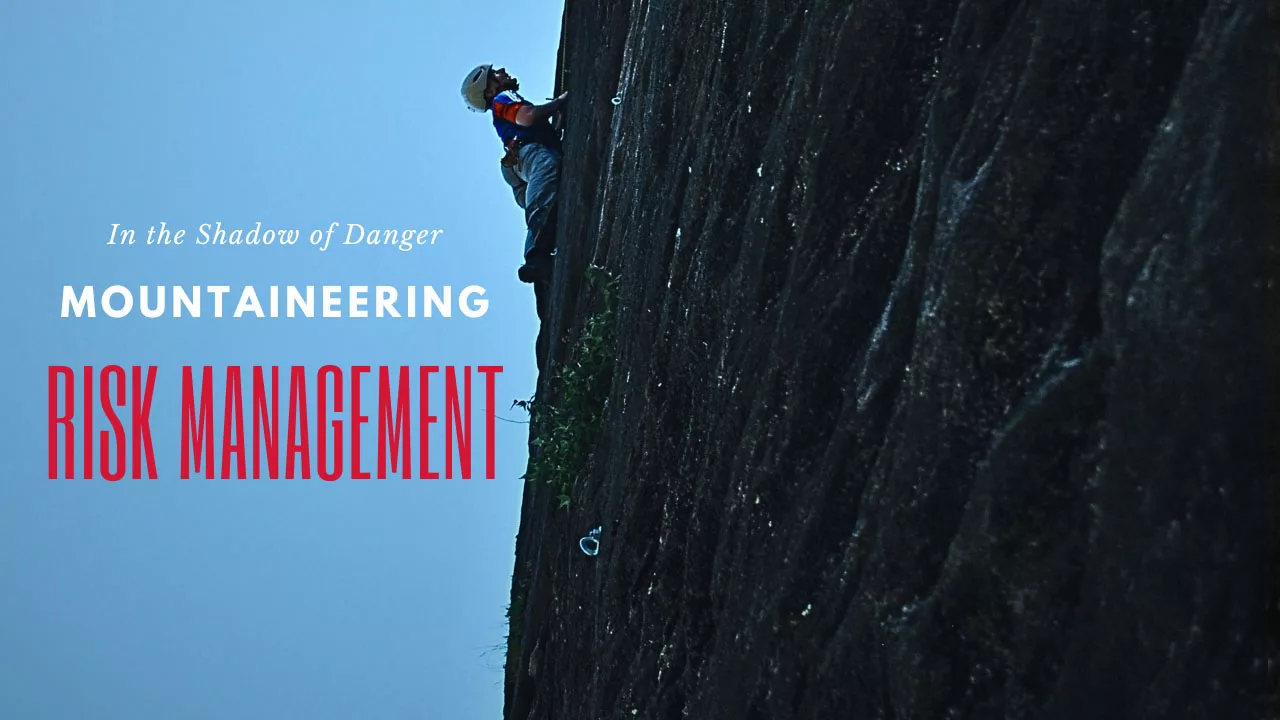
Conclusion:
Understanding the fall factor is vital for climbers as it directly influences the forces experienced during a fall. By calculating the fall factor and taking precautions to manage it effectively, mountaineers can enhance safety and reduce the risk of injuries. Remember, proper education, experience, and teamwork are essential for making wise decisions while climbing. Always prioritize safety and responsible climbing practices to enjoy the mountains fully. Happy climbing!
Faqs
In climbing, a fall factor is a numerical value that measures the severity of a fall. It is computed by dividing a fall’s length by the quantity of rope available to absorb the fall. The ff is crucial because it helps climbers and belayers understand the potential impact force on the climbing system, which directly affects safety.
As the fall factor increases, the impact force on the climbing system also increases. A higher fall factor results in greater stress on the protection, rope, and climber’s body. Managing fall factor is essential to reduce the risk of injury and equipment failure.
It’s challenging to eliminate the fall factor, but climbers can take steps to minimize it. Proper placement of protection, maintaining communication with the belayer, and being cautious while climbing can all contribute to reducing the fall factor.
The fall factor is more about safety than climbing grades or difficulty. It is a crucial aspect for all levels of climbing and is essential for ensuring a safe climbing environment.
Learn about Breaking Strength
